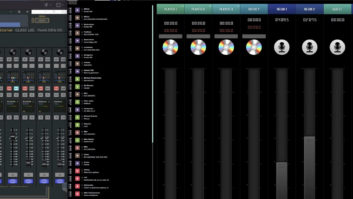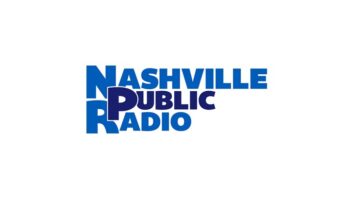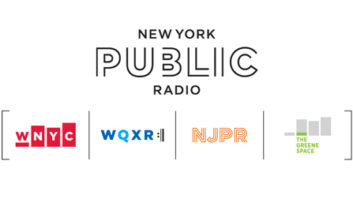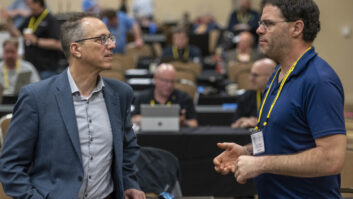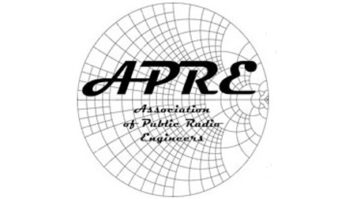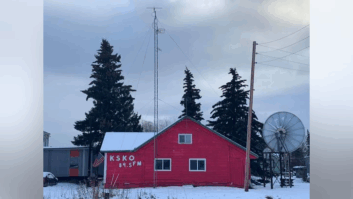This story is excerpted from “The Cloud Shines for Radio,” a free ebook. It explores trends in how radio stations are using cloud-based technologies.
“Cloud-based content creation and delivery has completely changed how we work,” said at Coalville Public Radio Station Manager and Chairman David Hyde. “It allows stations to be more fluid, inclusive and resilient.”
The volunteer-run, not-for-profit station serves North West Leicestershire in the heart of England. It uses a Myriad Cloud playout system from Broadcast Radio as its backbone.
“We no longer need to broadcast back to a fixed studio because the studio now comes with us. As long as we’ve got a stable 4G connection, we can access our playout system from anywhere. That means we can go live from a field, a high street or a front room.”
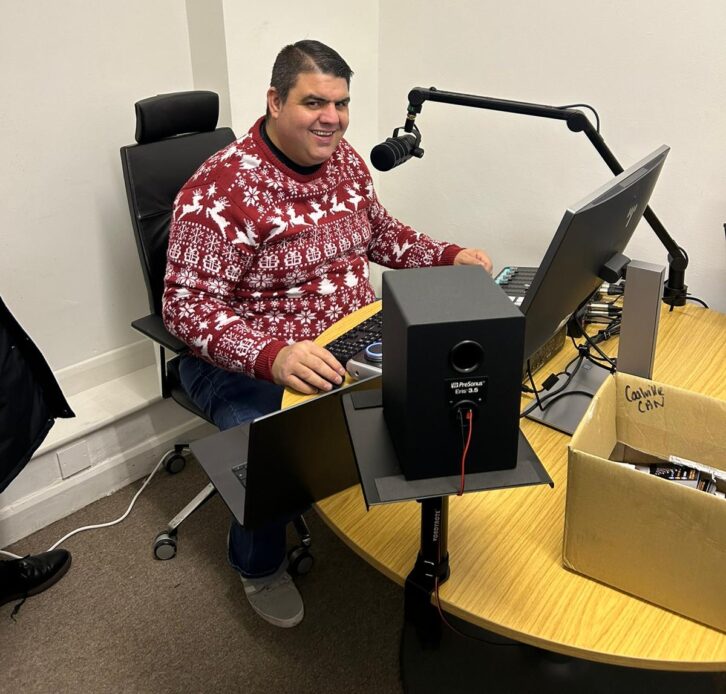
Broadcast from all over town
Hyde said this has made broadcasting more accessible than ever. “Volunteers who can’t travel to the studio can now invest in simple, affordable equipment and broadcast from home, and listeners would never know the difference. That is a game-changer for inclusion. We’ve reduced costs, energy use and barriers to entry. For any station looking to future-proof itself, cloud-based systems aren’t just smart — they are essential.”
The system is used for live shows, pre-recorded content, scheduling and remote contribution, as well as hosting on the website and mobile apps.
“We also use cloud-based tools for file sharing and audio editing, meaning our whole workflow from content creation to broadcast can happen without anyone stepping foot in the studio.”
For Hyde the biggest advantage is flexibility. The team is able to broadcast live from nearly anywhere using a mobile device, Bluetooth earphones and a Røde microphone. The app allows them to host shows, conduct street interviews and hand back to the studio.

“We can broadcast from live events, presenters’ homes or even out in the field using a 4G MiFi router no bigger than a credit card. I’ve hosted events while standing on stage, triggering music and sound effects from an iPad, reading scripts, traffic and weather, all while staying in full control of the broadcast as if I were in the studio.”
Meanwhile software updates and technical issues can now be worked out more easily, or even in the background.
What other stations should keep in mind
The process has not been without kinks. Cloud services are still relatively new, he said, and are catching up with traditional self-hosted software in terms of features. Integration with older legacy studio hardware can still be a challenge. “But the benefits far outweigh the drawbacks.”
Hyde emphasizes the importance of network reliability.
“Without a stable internet connection, especially during live broadcasts, everything comes to a halt. While bandwidth requirements are modest, a dependable connection is essential. Your internet connection is your studio now. It doesn’t need to be fiber, but it must be stable. A MiFi router can be a lifeline. As 5G and wireless tech improve, so will remote reliability. Most home broadband is faster than 4G, meaning people in rural areas can now join the airwaves.”
Security is another key factor. Their cloud system simplifies this with built-in user role management. “You can control access levels, monitor logins and remove users as needed. No personal data is stored on devices, and security is always up to date.” If a problem develops, support is a phone call away.
As far as costs, “Traditional setups come with expensive hardware, electricity bills, engineering support and infrastructure maintenance. With the cloud, all of that is replaced by a predictable monthly fee. We upload and manage content centrally, and the system handles storage and updates. It’s also greener — we’re not running servers 24/7. For community stations with one stream, the savings are significant. Even larger commercial stations handling multiple feeds could reduce energy, staffing and equipment costs dramatically.”
We asked Hyde what advice he would give to a radio station or network considering a move to the cloud.
“Don’t be afraid of the change. The cloud isn’t a downgrade — it’s an upgrade in flexibility, scalability and simplicity. Evaluate what you want to move: playout, scheduling, remote shows or the full workflow. Check your internet stability and have a backup like a 4G router,” he said.
Make time for staff training. Your platform may be intuitive, but guidance goes a long way. “Set clear access levels to avoid confusion, especially with volunteers.”
Assess your existing equipment. “You don’t need to overhaul your studio. Affordable equipment like a Rødecaster Pro II and a MIDI controller is enough to run a professional cloud-connected studio.
“People often think cloud setups are less professional, when in fact they are just as capable, if not more so. With the right platform and gear, you get the same sound and control as traditional setups. Another myth is that it’s too complex. In truth, it’s much simpler. Most importantly, choose a provider who listens.”
Read more about this topic in “The Cloud Shines for Radio.”
